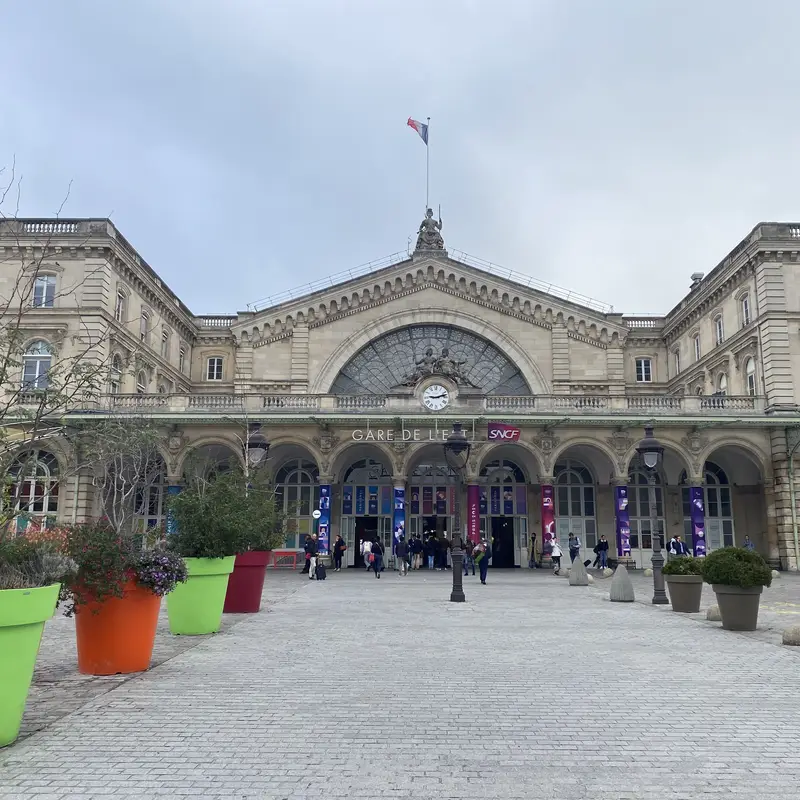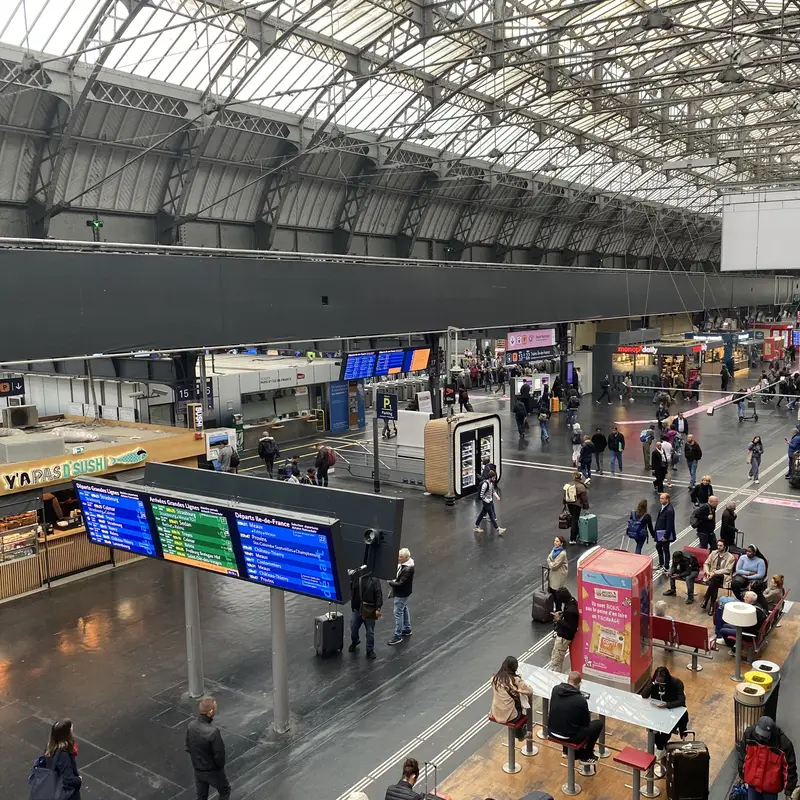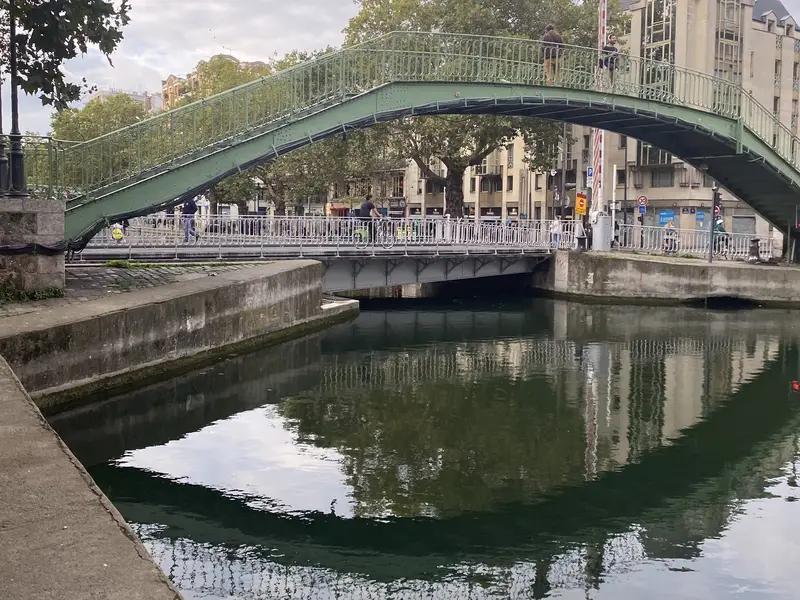Gare de l’Est: Paris’ Eastern Railway Station
Discover the story of Gare de l’Est, a Parisian station that blends rich history with the modern world.
The Historical and Contemporary Charm of Gare de l’Est: Paris’ Gateway to the East
Gare de l’Est (abbreviated as Paris Est), one of the oldest and most impressive railway stations in Paris, is not only a crucial transportation hub but also a place rich in history and architecture. Located in the 10th arrondissement, it connects Paris with eastern France, Germany, and other European countries. Let’s delve into the fascinating story of this station, its architectural uniqueness, and its modern significance.
The Birth of the Station in the 19th Century
Gare de l’Est was opened in 1849 under the name Embarcadère de Strasbourg, as it was primarily designed as the departure point for trains heading to Alsace and Germany. At the time, railway transport in France was undergoing dramatic development, reflected in the ambitious plans for building the station. Architect François-Alexandre Duquesney designed the building in the neoclassical style, popular for its majesty and practical elegance.
Two Buildings, Two Eras
At the beginning of the 20th century, Gare de l’Est was expanded with a second building known as the Verdun Building. This section was constructed to commemorate the Battle of Verdun during World War I, emphasizing not only its historical significance but also the role railway transport played during the war. The facade of the building features decorations honoring the courage and sacrifices of soldiers.
The original Strasbourg Building remains true to its initial architecture, with spacious halls and a magnificent facade. Together, the two buildings create a unique dialogue between the 19th and 20th centuries.
A Symbol of War History
Gare de l’Est plays an important role in historical context, particularly during World War I. One of the most striking symbols of this era is the monumental painting “Le Départ des poilus, août 1914” (“The Departure of Infantrymen, August 1914”) by American artist Albert Herter. This powerful artwork, measuring five meters in height and twelve meters in length, was donated by the painter in memory of his son, who fell in 1918 near Château-Thierry in the Aisne department.
The painting was first displayed in 1926 in the presence of Marshal Joffre and has since become a part of Gare de l’Est’s history. It was temporarily removed in 2006 for restoration and transferred to the Railway Museum in Mulhouse, France. After successful restoration, it returned to its original location in 2008, where it continues to honor the war’s sacrifices and the bravery of soldiers who departed for the front from Gare de l’Est.
Modern Role and Upgrades
Today, Gare de l’Est serves as a significant transportation hub connecting Paris with cities like Strasbourg, Frankfurt, and Munich through international and high-speed TGV and ICE trains. Beyond railway transport, the station continuously modernizes to offer comfortable services to travelers—from restaurants and cafes to shops.
In its effort to keep pace with the times, infrastructure upgrades include eco-friendly measures and interior improvements. The station is equipped with information technologies that facilitate the movement of thousands of passengers daily.
An Architectural and Cultural Gem
Gare de l’Est is not just a transportation hub but also an architectural gem worth visiting. Its grand halls, glass windows, and facade details captivate everyone who visits. Moreover, the station is located near other Parisian attractions, such as the famous Canal Saint-Martin, making it an ideal starting point for exploring the city.
Connections with the Paris Metro and RER
Gare de l’Est is also a key node in Paris’ urban transport system. The station is connected to Metro lines 4, 5, and 7, ensuring easy access to all parts of the city. Line 4 leads to the historic center and iconic boulevards, Line 5 heads toward the main Gare d’Austerlitz station, and Line 7 takes you to destinations like the Louvre Museum. Additionally, the RER E line, which connects Paris with its eastern suburbs, is accessible nearby. Thanks to these connections, Gare de l’Est is a perfect starting point for both international travelers and those exploring Paris and its surroundings.
The Importance of Gare de l’Est in Today’s Paris
Gare de l’Est is more than just a place where journeys begin or end. It represents the dynamism of Paris, its connection to the world, and its rich past. Whether you are catching a train or admiring its architecture, this station transports you not only to other cities but also to other times.













